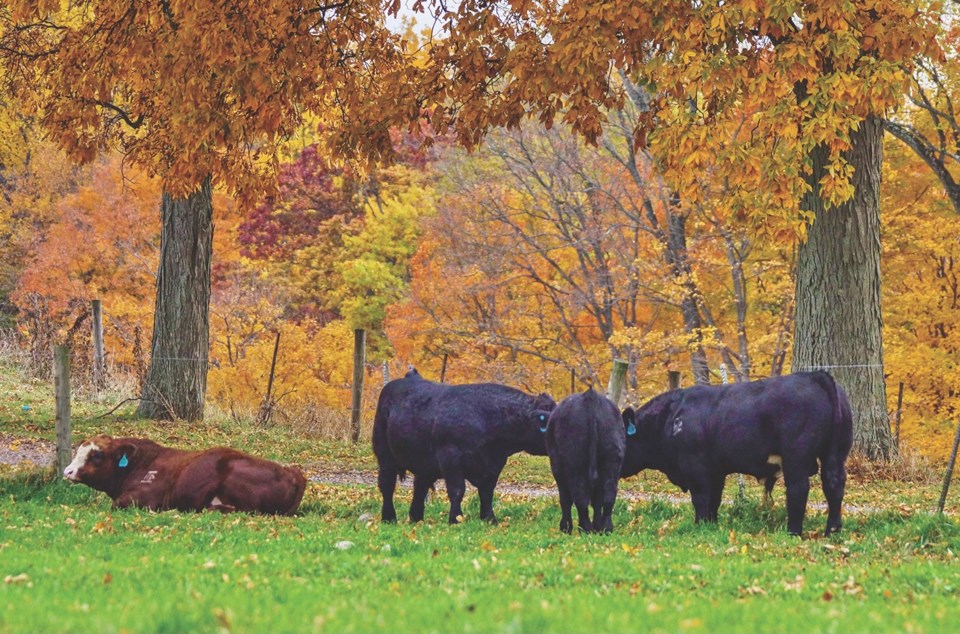LAKELAND - Riparian areas are vital to the overall health of the ecosystem, which is why local organizations are offering programs that help ag producers keep these areas thriving.
“The overall goal is to help improve the health of the riparian area. There are many benefits to supporting riparian health, not just for the riparian area, but also for aquatic and ecosystem health, and everything has a larger impact because all ecosystems are connected,” expressed Lakeland Industry and Community Association (LICA) Environmental Coordinator Tricia Fleming.
Kellie Nichiporik, environmental program manager for Lakeland Agriculture Research Association (LARA) described the riparian area as the "kidney function for water."
In addition to filtering out nutrients, the deep rooting vegetation prevents erosion along the shoreline.
“They’re a really important resource to protect. They’re also very, very heavily productive,” she explained.
That's why both LICA and LARA offer financial assistance to livestock producers through their own funding streams.
For LICA, it comes in the form of the Riparian Health Funding Partnership for Livestock Producers Program, which offers 100 per cent of the funding needed for the installation of riparian fencing and off-site watering systems for livestock.
LARA's Watershed Resiliency and Restoration Program also offers to cover some of the cost of riparian fencing, in addition to water course crossings, off-site water systems, and pond levelers.
“One action that’s harmful, or potentially harmful, on riparian health is having livestock in the riparian area during the most sensitive period of the year. That’s when it’s wet,” Fleming explained. “By helping to keep livestock out of those areas during that timeframe, it provides that benefit to the riparian area to help it develop healthily."
Cows in particular can cause damage, not only because of their weight, but also their tendency to eat the plants required for riparian health and defecating and urinating in the water.
Nichiporik said there are some pluses to allowing livestock to graze in the riparian area during certain times. She described it as "controlled access."
"It’s not to say you can’t put your livestock in there ever, it’s maybe putting it in there when the soils aren’t going to be super impacted or heavily influenced, like in the spring when the soils are really saturated, they usually compact. It makes it smart access,” she expressed. “You don’t want that vegetation to go crazy wild either, so you do want to manage it a little and you can do that through grazing."
Once you restrict livestock from accessing these areas 24/7 however, they need a different water source.
“That’s why this is a dual-faced project. We help provide the fencing, and also help provide watering systems so producers are still able to water their animals at the same time,” outlined Fleming.
She added, not only are these water systems a major benefit for riparian areas, but they're also good for the animals.
"(Livestock) are healthier when they can have a more pristine water source. They grow better, they have better returns on their products for producers, and also their feet do a lot better because they’re not wet all of the time."
Fleming continued, “In the end, this project benefits ecosystem health, aquatic ecosystem health, riparian health, and herd health."
Nichiporik agreed.
"I think, there’s a very strong correlation with economic benefit, because having cleaner water, you get better cattle,” she noted. “I think there’s a lot more uptake for those projects because they can see the return."
This is partially why she believes their off-site watering system funding has been so popular over the years.
What differs the most between the two programs is their funding models.
While LICA offers to cover 100 per cent of the cost, LARA's dollar contribution varies depending on the project.
LARA will also partially fund pond levelers, which is something LICA doesn't currently offer.
"A lot of farmers complain about beavers on their land because of flooding, however, they’re still good on your land because that way they keep water on your landscape. Controlling how much water is flowing and where is a really big key to that, that’s why we use co-existence tools,” explained Nichiporik. “It prevents the beavers from damming up the water, so you can control what level it’s at with that pond leveler."
Nichiporik said what it all comes down to is preserving the local water systems.
“All water is connected, so people might look at a smaller wetland and not see the benefit of protecting it, however, that wetland may be recharging ground water which people will use for their potable water,” she expressed. “Protecting all water is very important, that’s something to keep in mind, is a lot of people’s house water and drinking water starts at the surface, so protecting that water is important."
Information and applications for both of these programs is available on the affiliated websites.



